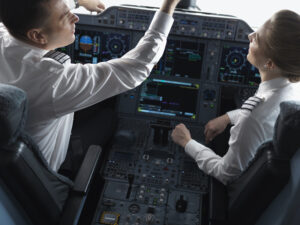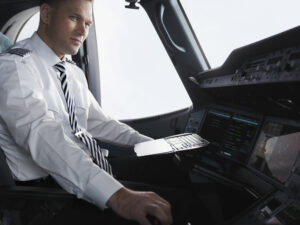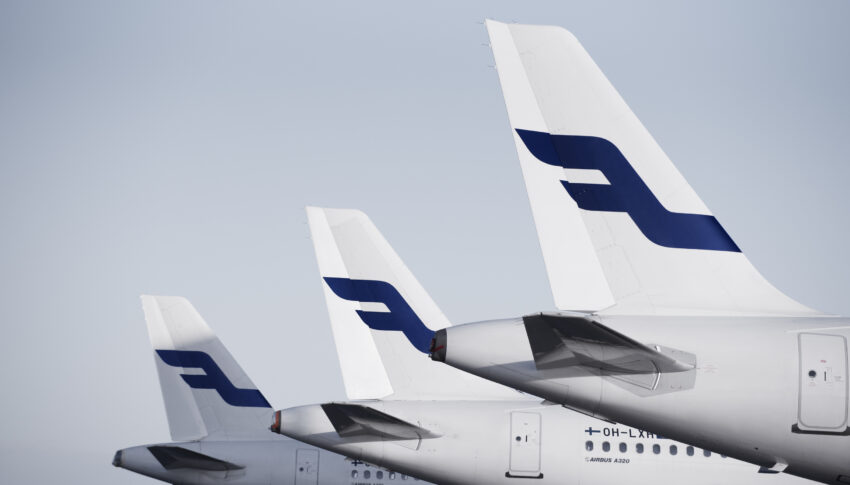In the context of ongoing shortages of both pilots and aircraft, the aviation industry is working hard to optimise flight deck operational scheduling and improve the conditions of the job. Technical flight deck commonality — first introduced by Airbus decades ago and optimised on an ongoing basis since — is proving to be a remarkable opportunity in the form of single fleet and mixed fleet flying. We sat down with fleet chief pilot Mikko Välisalo from Finnair to learn more.
“Single fleet flying (SFF) means flying two different aircraft types with one aircraft type rating,” Välisalo tells us. “This means flying for example both Airbus A330 and A350, since those have a common type rating in pilot license.”
By contrast, he explains, “mixed fleet flying (MFF) means flying two different aircraft types that require two separate type ratings. The maximum of two aircraft types are allowed for one pilot on active duty.”
“SFF and MFF flying allows flexibility to use pilot resources on two aircraft types at the same time,” Välisalo says. “Pilot resources can be allocated differently during summer and winter seasons or an aircraft type could be changed easier for a single flight.”
Beyond common type ratings, single and mixed fleet flying are beneficial both for the airline and its pilots. For the airline, the differing length of scheduling blocks for shorthaul and longhaul missions means that they can make more efficient use of their pilots. Airbus suggests that this can be between 5 percent and 15 percent per rostered pilot with SFF and MFF.
For those pilots, the chance to fly both shorthaul routes provides more takeoffs and landings at a variety of airports in a variety of conditions, while longhaul routes provide a change in working environment and layover destinations.
It also enables efficient swapping of aircraft for demand surges — replacing an A320 with an A350 in the event of irregular operations or a major sporting event, for example — or for seasonal cargo changes where a widebody aircraft or even a cargo freighter covered under MFF/SFF might be more suitable.
And when it comes to pilot hiring, the reduced training days to qualify from one Airbus aircraft to another is particularly attractive, allowing airlines to hire from a wider pilot pool and pilots to be eligible for more opportunities than otherwise they might be.


The hardware requirements for differences training between aircraft is also reduced, with airlines and pilots in some cases able to use non-moving or ‘fixed base’ flight training devices (FAA level 6 or EASA level 2) rather than fully moving flight simulators. Airbus suggests that retraining costs can be cut by around two-thirds on average as a result of this operational commonality.
The FAA common type rating or EASA single licence endorsement is a critical part of the puzzle when it comes to optimising the pilot pool of an airline, and is undertaken by many airlines. Alongside Finnair, TAP Air Portugal and others using widebody and narrowbody twinjet cross-platforming, late last year Japan’s Civil Aviation Bureau approved ANA’s pilot pools to use mixed fleet flying between its shorthaul A320 and iconic longhaul Airbus A380 “Flying Honu” turtle-painted fleet.
Airlines must, of course, manage schedules to ensure adequate rest, but Finnair’s internal risk assessment and studies, as well as a decade and a half of safe operations, show that flight safety is not compromised by MFF and SFF operations.
Indeed, Finnair’s MFF operations began in 2006 with a group of pilots flying both its A320 family aircraft and its now-departed A340-300 widebodies. A second MFF group pairing the A320 with the A330-300 began in 2009, as did a third pairing with the A330 and the A340. This three-group situation lasted until the A340’s retirement, and the airline now operates two groups: MFF for the A320/A330 and SFF for the A330/A350.
Towards the future, Välisalo says, “Mixed fleet flying with A320 and A350 has not been used within Finnair. This is an opportunity and it is something to be carefully evaluated and tested in the future.”
In addition, he notes, “flexible use of A350 and A330 aircraft on certain routes is an area of further improvement. Not all pilots are involved in SFF flying so rostering and aircraft changes for operational purposes need close attention.”
Given the need to ensure safety, calculate schedules and manage crew requirements, digitalisation is critical to the success of MFF and SFF. The airline’s crew management system covers both groups, tracking recencies for all aircraft, including the additional requirement to fly a takeoff and landing for each MFF or SFF variant within 45 days. Limiting the number of longhaul flights within a calendar month is also possible.
“Another major backbone for MFF and SFF operations is crew training,” Välisalo tells us. “Evidence Based Training is used and every other EBT module is on a different aircraft type. Through core competencies and understanding the aircraft differences the safe operation is ensured.”
As one example of these systems-based differences, the A350 has additional systems to the A330 and A320, including automatic emergency descent and autopilot TCAS (traffic collision avoidance system). The airline must therefore identify, manage and mitigate the risks of pilots’ awareness of what systems are available on which aircraft, and where they are not. Finnair does not operate the A330neo, which has been designed to take advantage of many of the technological advances in the A350 while retaining much commonality with earlier models.
This goes beyond the more physical flying differences, such as the sweet spots for flaring the aircraft at the end of the runway, for example.
“Aircraft systems develop all the time and modifications are performed continuously,” Valisalo notes, giving as one example Airbus having “unified the manuals and procedures for different aircraft types and Finnair has further unified the procedures [for the] A320, A330 and A350 to make the transition easier to another aircraft type.”
“These are all evaluated and the whole fleet is kept as unified as possible,” he concludes. “Of course this is not always possible, but through crew briefing materials and better digital tools in the future pilots are provided ways to stay up to date on aircraft status and differences.”
Author John Walton
Published 10 November 2022
Photos courtesy of Finnair




